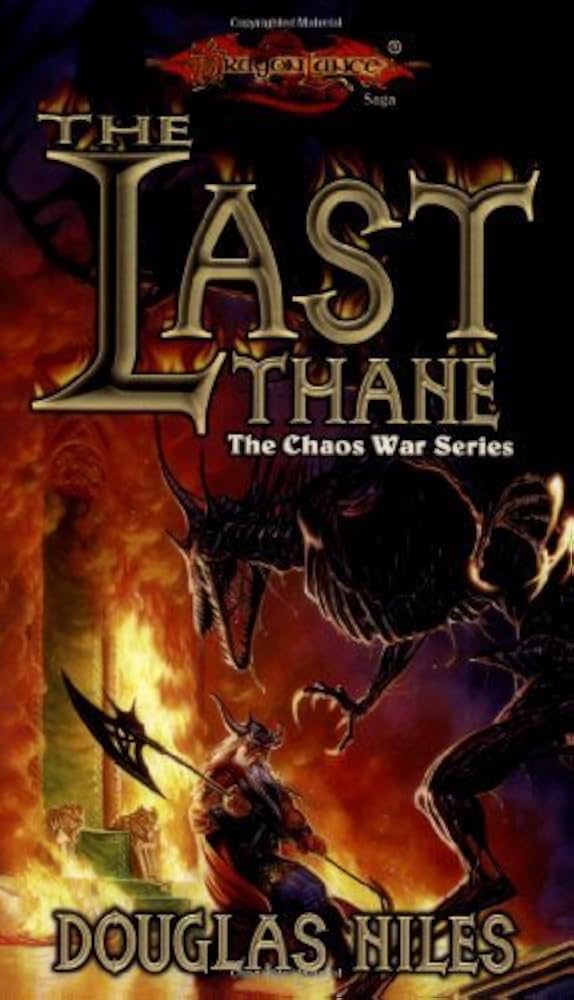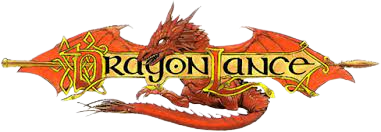The Last Thane

Table of Contents
ToggleOverview
The Last Thane is the opening novel in the Heroes II series and one of the most important books for dwarf-lovers in Dragonlance. It takes readers deep into the subterranean kingdom of Thorbardin, home of the mountain dwarves, during a time of crisis and transition.
The story centers on Glade Hornfel, heir to the ruling Hylar clan, as he struggles to navigate tradition, political betrayal, and personal honor, all while trying to preserve his people in the wake of the War of the Lance.
This is a tale of succession, civil unrest, and national identity, rich in dwarven customs and conflicts.
Main Character: Glade Hornfel
- Son of Hornfel, the aging and dying High Thane of the Hylar (one of the major dwarven clans).
- A noble-hearted and thoughtful dwarf, Glade is torn between loyalty to his father’s legacy and the need for progressive change in a kingdom stuck in the past.
- Struggles to gain respect as a potential ruler—young, idealistic, and seen as untested.
Supporting Characters
- Hornfel – The old High Thane, a respected leader now on his deathbed. His passing triggers the coming succession crisis.
- Dugald Daewar – A powerful rival, head of the Daewar clan, who seeks control of the council and may stop at nothing to seize the throne.
- Selana – Glade’s romantic interest and voice of reason, offering emotional grounding amid political turmoil.
- The Council of Thanes – Leaders of the major clans (Hylar, Daewar, Theiwar, Klar, and others), each with different motives, prejudices, and ambitions.
Setting
- Takes place almost entirely within Thorbardin, the vast dwarven kingdom beneath the Kharolis Mountains.
- This book offers one of the most detailed explorations of dwarven culture in Dragonlance: politics, architecture, religion, ceremony, and the tension between the clans.
- The dwarves are in cultural decline, their isolation after the War of the Lance and previous conflicts having cost them influence and population.
Plot Summary
A Kingdom in Crisis
With High Thane Hornfel on his deathbed, Thorbardin is poised on the edge of civil strife. The Council of Thanes must choose a new leader—but rivalries, ambition, and ancient grudges threaten to tear the kingdom apart.
Glade Hornfel is his father’s heir, but many see him as too young and too soft, while others, like Dugald Daewar, actively work to block his ascension.
The Weight of Legacy
Glade must navigate a maze of backroom politics, assassination attempts, and shifting alliances, all while staying true to his father’s ideals and his own vision for Thorbardin’s future.
He faces:
- Sabotage from rival clans
- Pressure to follow outdated customs
- A choice between war and compromise
All while the dwarves must decide whether to remain in isolation or rejoin the wider world after years of hiding behind stone walls.
The Battle for the Throne
Tensions boil over into violence as factions push their agendas. Glade is forced to choose between peace and power, and must prove himself—not through brute force, but through wisdom, compassion, and courage.
With the kingdom splintering, Glade steps into his role not as his father’s son, but as his people’s last hope.
In the climax, he takes a stand that unites the clans, not through conquest but through vision, earning his place as the Last Thane in name—and the first of a new era in spirit.
Themes
- Succession and Legacy – What does it mean to inherit a throne? Can one honor the past without being chained to it?
- Dwarven Identity – The novel examines what makes a dwarf—not just in blood, but in values: honor, family, endurance, and leadership.
- Change vs. Tradition – Glade’s journey reflects the painful but necessary transformation of a people stuck in the past.
- Unity Through Vision – The clans can only survive if they look beyond old grudges and embrace a shared future.
Tone & Style
- Politically intense, with council intrigue and clan rivalries driving most of the drama.
- Grounded and immersive, offering rich details on dwarven rituals, architecture, and society.
- Less about action, more about tension, character development, and moral decisions.
- Somber but hopeful, with a tone that balances gravitas with a sense of quiet determination.
Reception
The Last Thane is considered:
- One of the best portrayals of dwarves in the Dragonlance world.
- A mature, character-driven story that doesn’t rely on flashy magic or epic wars to create impact.
- A valuable lore piece for fans interested in Thorbardin, the dwarven clans, and their post-War of the Lance status.
Some critiques include:
- The political pacing may feel slow to readers expecting big battles or magical duels.
- The action is largely personal and cultural, not sweeping or world-ending.
But for those invested in world-building and character legacy, it’s a deeply rewarding read.
Final Thoughts
The Last Thane is a thoughtful, dignified, and emotionally grounded fantasy novel about inheritance, leadership, and the soul of a people. It shows that true power doesn’t come from conquest, but from understanding what your people truly need—and having the courage to give it to them.
Recommended for:
- Fans of dwarven culture, honor codes, and political intrigue
- Readers who enjoy stories about leadership, tradition, and coming into one’s own
- Anyone interested in the inner workings of Thorbardin and its role in the Dragonlance world
“Not the loudest voice, nor the strongest arm, but the clearest vision will guide the stone halls forward.”
